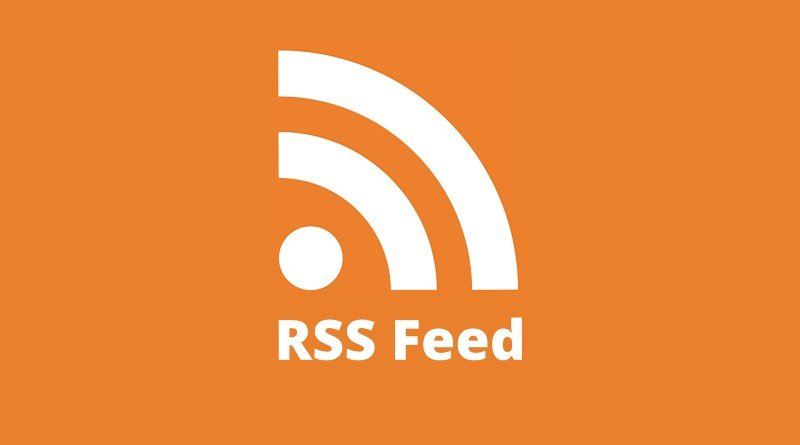Introduction
In the ever-evolving world of geospatial technology, it is crucial to stay updated with the latest information. In this article, we'll explore RSS feeds; what they are, how they work, and how they can influence the way you access and consume content.
What are RSS Feeds?
RSS stands for Really Simple Syndication. It is a technology that enables you to receive updates from your favorite websites, blogs, and online sources in a structured and easy-to-digest format. It serves as a personalized news feed that brings content directly to you, saving you time and effort and also keeping you up-to-date on news tailored to your interests. When you subscribe to a website’s RSS Feed, you will automatically receive notifications whenever new content is published on the website.
How RSS Feeds Work
RSS feeds function as a pipeline for content distribution. RSS feeds work by using a standard format called XML, which stands for Extensible Markup Language.
Websites that offer RSS feeds create XML files that contain summaries or their full content, along with metadata (essential details) such as the title of the content, the author of the content, the publication dates, and a link to the content. These XML files serve as a dynamic pipeline, that channels updates directly from the websites that your RSS reader can interpret and display to you as a recipient.
How to get started with RSS Feeds
To get started with receiving updates via RSS feeds, you need an RSS reader. An RSS reader is a program that can read RSS feeds. This can be a standalone application, a web-based service, or even a feature within certain email platforms.
Once you've chosen an RSS reader, you can subscribe to the feeds of your preferred websites by adding their RSS feed URLs. From that point on, your RSS reader will periodically check for and fetch updates from the websites’ RSS feed and display them to you in a unified interface.
You can then read the new content in your RSS reader, or you can click on the link in the RSS feed to open the content in your web browser.
There are many different RSS readers available that you can use to subscribe to and manage RSS Feeds, which are available for desktop computers, laptops, smartphones, and tablets.
Some popular RSS readers include, but are not limited to:
Feedly: Feedly is a widely used RSS reader that offers a user-friendly interface and allows you to organize your feeds into categories. It also provides features like saving articles for later, sharing content, and integration with other platforms. It works on desktops and laptops through web browsers and also offers mobile apps for both iOS and Android devices. Feedly offers both free and paid plans, with additional features in the paid version.
Inoreader: Inoreader is known for its advanced features, including rules and filters for organizing content, an active search function, and the ability to subscribe to social media feeds. It is accessible through web browsers on desktops and laptops and also provides mobile apps for iOS and Android devices. Offers free and premium plans, with enhanced features in the premium version.
Flipboard: Flipboard takes a visually appealing approach to RSS reading. It presents articles in a magazine-style layout and allows you to curate content based on your interests. It's available as a mobile app and a web version.
NewsBlur: NewsBlur offers both a web and mobile app experience. It emphasizes real-time updates and provides features like filtering out unwanted content, social sharing, and the ability to train the system to show you more of what you're interested in.
The Old Reader: The Old Reader provides a similar experience to the now-retired Google Reader. It offers a simple interface for subscribing to and organizing feeds. The Old Reader can be accessed via web browsers on desktops and laptops, as well as mobile browsers on smartphones and tablets via mobile-friendly web versions.
Netvibes: Netvibes goes beyond just RSS reading, it allows you to create personalized dashboards to monitor various types of content, including social media updates, news, and more. It works on desktops and laptops through web browsers and also offers a mobile-friendly web version that can be accessed from mobile browsers on smartphones and tablets. Netvibes offers both free and paid plans.
Tiny Tiny RSS: Tiny Tiny RSS is a self-hosted RSS reader, which means that you can set it up on your own server and access it from desktops and laptops. This option gives you more control over your data and the reading experience. Tiny Tiny RSS is open-source and free to use.
Each RSS reader has its own set of features and user interface, so it is always a good idea to explore them to see which one suits your preferences and needs best.
Benefits of RSS Feeds
Now, let us look at some of the benefits of using RSS Feeds:
Centralized Updates: You no longer have to visit all your favorite websites one after the other to stay up-to-date. RSS Feeds bring together diverse content from various sources, enabling you to access these diverse content from a single hub. This makes it convenient for you to stay updated and informed.
Customized and Tailored Content: You have the power to curate your content consumption, you can choose the content you want to receive updates about, select the specific niches you are interested in, and enjoy the privilege of receiving content that suits your interests and preferences.
Time Efficiency and Convenience: Instead of manually sourcing the internet for updates, RSS feeds save you time by delivering relevant content directly to you. This allows you to use your valuable time to focus on what matters most.
Offline Access: Most RSS readers allow you to download content for offline reading. This is very handy when you’re on the move or find yourself in areas with limited internet connectivity.
Conclusion
Exploring and making use of RSS Feeds will enhance your experience in the geospatial industry. You can now have access to timely updates, industry news, and educational content to keep you informed. Embrace utilizing RSS Feeds and embark on a journey of effortless and timeless information consumption.
Explore RSS Feeds - your gateway to seamless and timeless updates!



